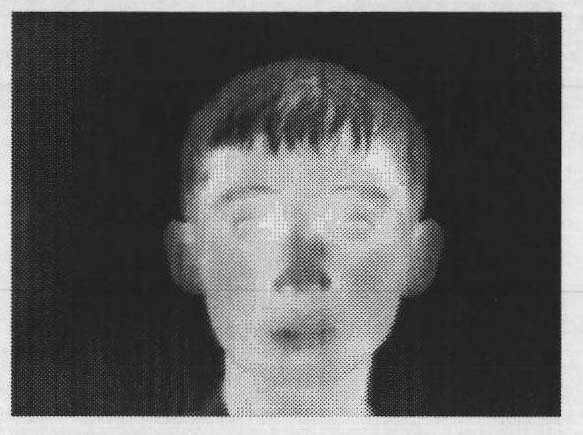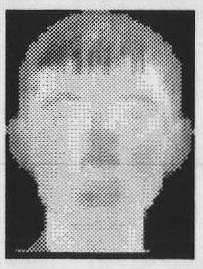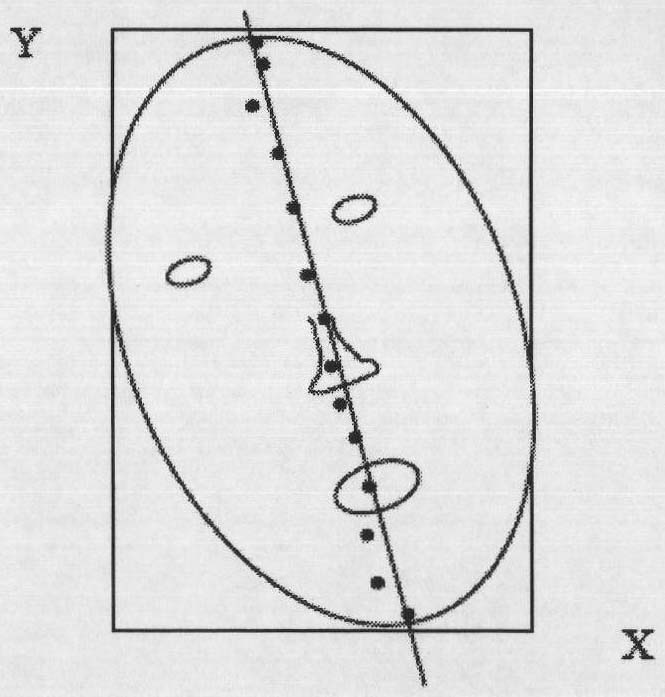Robust infrared face recognition technology
An infrared human and face recognition technology, applied in the field of robust infrared face recognition, can solve problems that do not conform to the heat transfer principle of biological tissues, achieve high theoretical research significance and practical application value, improve accuracy, and stabilize blood flow biological characteristics Effect
- Summary
- Abstract
- Description
- Claims
- Application Information
AI Technical Summary
Problems solved by technology
Method used
Image
Examples
Embodiment 1
[0047] Such as Figure 5 Shown, the technology of the present invention comprises the following steps:
[0048] 1. Collect images, perform face detection, geometric normalization, and face direction detection on the images.
[0049] Firstly, the database is collected, and what is used is the ThermoVisionA40 infrared camera produced by FLIR. The camera uses an uncooled microbolometer sensor with a pixel resolution of 320 x 240 and a spectral response band of 7.5 to 13 microns. In order to accurately measure the surface temperature of the measured object, the device has a temperature self-calibration function to eliminate temperature drift. Its temperature sensitivity is as high as 0.08°C. The original infrared face image such as figure 1 shown.
[0050] Assuming that the skin temperature of the human face is higher than the temperature of the environment, the human face can be easily detected from the infrared image. Assuming that f(x, y) is the original face image, and a...
Embodiment 3
[0111] like Image 6 As shown, after preprocessing and geometric normalization of the infrared face image, the image is first normalized by 0-1. The value obtained by 0-1 normalization is used as the weight of the point on the face that changes with temperature. Then extract the state parameters in the image, and use the lowest value in the image as the ambient temperature value when the image is collected. Finally, the temperature difference between the image and the image in the standard environment and the obtained weight are used to normalize the temperature of the image. The normalized image can better reduce the influence of the ambient temperature on the image. Embodiment 3: as Figure 7 and 8 As shown, after temperature normalization of the image, based on the classic Pennes biological heat transfer equation in the biological heat transfer model, we converted the infrared face image into a discrete blood flow map through discretization modeling. The discrete blood ...
Embodiment 4
[0113] like Figure 10 As shown, first, the first PCA+FLD feature extraction is performed on the total training samples (assuming there are M samples). Then, the first PCA+FLD feature extraction is performed on the test samples. Recognition is performed based on the extracted features, sorted according to the size of the Euclidean distance, and the first N (where N<M) samples are taken out to obtain secondary samples. Finally, PCA+FLD feature extraction is performed on the secondary sample, and the test sample is recognized in the new feature space, and the class with the closest distance is the final recognition result.
PUM
 Login to View More
Login to View More Abstract
Description
Claims
Application Information
 Login to View More
Login to View More - R&D
- Intellectual Property
- Life Sciences
- Materials
- Tech Scout
- Unparalleled Data Quality
- Higher Quality Content
- 60% Fewer Hallucinations
Browse by: Latest US Patents, China's latest patents, Technical Efficacy Thesaurus, Application Domain, Technology Topic, Popular Technical Reports.
© 2025 PatSnap. All rights reserved.Legal|Privacy policy|Modern Slavery Act Transparency Statement|Sitemap|About US| Contact US: help@patsnap.com



